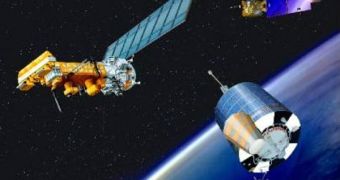At a time when the world is facing growing food shortages, and droughts or floods have driven the price of basic food out of the reach of millions of people, the American space agency is working together with local authorities to supply governments with the most accurate estimates of soil traits. Based entirely on satellite observations, the readings indicate the moisture of the soil, a crucial factor in predicting the yield of a given terrain. And, given the fact that the world food supply is dwindling, and rice and grain prices are very high, these studies could make all the difference for the world's poor.
“The USDA's [United State Department of Agriculture] estimates of global crop yields are an objective, timely benchmark of food availability and help drive international commodity markets. But crop estimates are only as good as the observations available to drive the models,” Physical Scientist John Bolten, who works at NASA's Goddard Space Flight Center, in Greenbelt, Maryland, said. Speaking this week at a Joint Assembly of the American Geophysical Union meeting, held in Toronto, Canada, the expert proposed that NASA used its Aqua satellite for the measurement.
He specifically referred to the Advanced Microwave Scanning Radiometer for EOS (AMSR-E) sensor aboard the spacecraft, which he believed could provide the Mission Control with invaluable data on the exact moisture levels of West African soil. According to Bolten and his team, predictions based on this instrument could be up to five percent more accurate than those based on any other similar device. Though they might not seem like much, he said, they could cause an important difference in the overall accuracy of regional models.
“Many developing countries are relying on limited and highly variable water resources. And typically those same regions don't have adequate ground station data or crop-estimating agencies capable of making reliable production forecasts,” Bolten added at the conference. “This advance is making it possible for us to do our job in a more precise way. We plan to make NASA's soil moisture information available to commodity markets, traders, agricultural producers, and policymakers through our Crop Explorer Web site,” USDA Foreign Agricultural Service Crop Analyst Curt Reynolds concluded.

 14 DAY TRIAL //
14 DAY TRIAL //